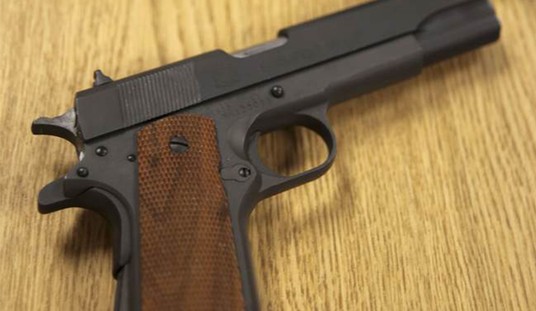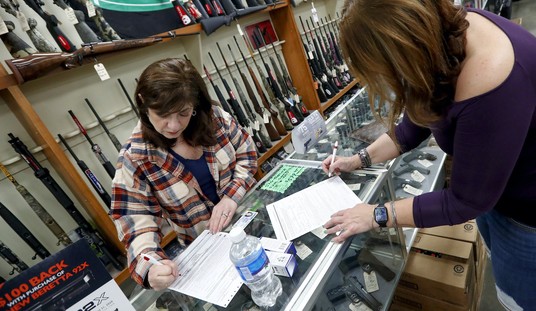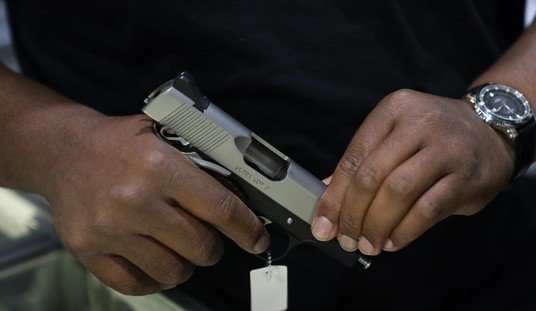The NYPD is coming under fire after an incident last night that saw a veteran police sergeant use his revolver instead of a taser after he was attacked by a mentally ill woman in a Bronx apartment building. She was apparently armed with a bat:
A woman died after she was shot by police officers on Pugsley Avenue in Castle Hill Tuesday night, according to the NYPD.
Police say she was taken to Jacobi Medical Center in critical condition, but died from her injuries.
It happened at 6:10 p.m. in the woman’s Pugsley Avenue apartment.
Police say neighbors called about a woman acting irrationally. When officers got there, they say the woman was in her apartment armed with scissors, picked up a bat and attempted to swing at them.
A uniformed officer shot the 66-year-old woman twice in the stomach, according to authorities.
Police say they have responded to the apartment before for other incidents. They say officers have had to restrain the woman before, and a neighbor says she once witnessed the woman taken away in a straitjacket.

This appears to have been a very tough situation for the responding officers, as they attempted to talk down a known violent EDP (emotionally disturbed person) whom they’ve successfully been able to take into custody in the past.
When officers entered her apartment early yesterday evening, the 66-year-old woman was armed with a pair of scissors, and was threatening to stab the officers. Scissors are clearly a deadly force threat in the close confines of an apartment, and so it was logical for the sergeant to have his handgun drawn.
Officers were apparently successful in talking her into putting down the scissors, but she then allegedly picked up a bat and charged the officers, attempting to hit them.
Was lethal force the correct response? It depends upon the totality of the circumstances.

Here are some of the factors that investigators will look at as they attempt to determine whether this was a justifiable use of deadly force by the NYPD sergeant:
- Was the woman physically capable of using deadly force?
- Was the bat wielded in a manner capable of delivering deadly force?
- Did the attack take place in a location where the bat could be used as a deadly weapon?
- Did the totality of the circumstances suggest that deadly force was the appropriate response?
Agitators and activists always want cut-and-dried, hard-and-fast rules to govern the use of force, and they insist upon them (and typically absurd restrictions on the use of force) because they actually know very little about the dynamics of physical violence. While you’ll never catch me claiming to be an expert on the subject, I’ve had a fair degree of training, and have been through some simulations, and have enough of grasp of the subject matter to know that context is key.
Was the 66-year-old woman a legitimate deadly-force threat?
I know some people are going to roll their eyes at the thought, but many of the deadliest people I know are grandparents with decades of experience fighting both with weapons and hand-to-hand.
While no one is suggesting that this woman had martial arts training, a bat doesn’t require much training. It merely requires a certain level of strength, dexterity, and overall fitness.
If the 66-year woman was small, frail, and weak, then it’s going to be more difficult to argue that she could pose a deadly threat with an impact weapon like a bat.
If she was in good shape and strong, however—a brawler like Vera in Harlem Nights, perhaps—then she may have the power to use an impact weapon like a bat to deadly effect with a single swing. This would make a deadly force response more understandable.

Was the bat being wielded as a deadly weapon?
This is a very simple idea, but an important one.
If she had the bat cocked back to swing it, then the bat has the potential to be used as a deadly weapon almost immediately, and could be considered an immediate lethal force threat. If she had it held in front of her to keep officers at a distance, or it was down at her side, or if she had choked up on it to the point that it would have very little power even if the tried to swing it, then it is not in a position to immediately be used as a deadly force weapon, and it would be difficult to justify using deadly force by the officer.
Did she have room to use the bat as a deadly force weapon?
A weapon such as a bat requires some level of room for the wielder to swing it and build up momentum/force. If the woman and the officers were in an open room in the apartment, then she clearly might have had enough room for a full swing that could cause serious injury or death. If she was in a doorway or hallway where she could not get a full swing and would have been reduced to thrusting the bat at officers, then the threat level would have been much lower.
Did the officers have enough distance/obstacles to avoid using deadly force at that moment?
An impact weapon like a bat requires the wielder to be within touching distance of his or her target. If there was little distance between the officer and the woman—within a room’s length—and she had an unobstructed path to him, then it is much more justifiable to use deadly force at that moment than it would be if she had to negotiate around a table, bed, or other piece of furniture or architecture.
Did the totality of the circumstances suggest that deadly force was warranted?
You’ll note that I haven’t brought up the fact that the officer used his handgun against this woman, even though he had a taser on his belt.
Why did he opt for the gun, over the taser?
As a general rule of thumb (and with no knowledge of the specific guidelines for taser use in the NYPD), tasers are typically used when a suspect is non-complaint, but isn’t suspected of being armed, or attempting to acquire weapons, and isn’t attempting to cause officers physical harm. The “point” of a taser in policing is to force compliance by short-circuiting the suspect’s central nervous system, and it is great when it works.
Tasers fail, however, with stunning regularity.
If both taser probes fail to make and maintain solid contact with the skin, or a person is under the influence of alcohol or drugs, or is simply angry or tough, tasers may not work.
When officers arrived, the woman was armed with a pair of scissors, which are very much a deadly force threat that can cause serious and perhaps even fatal wounds with a minimum of force. Deploying a handgun as a counter is the only rational response for the lead officer if he did not have anything other than the equipment on his person as he answered the call.
The woman reportedly put the scissors down, only to pick up the bat and swing it at the officer.
Based upon the totality of the circumstances described, the use of deadly force seems as if it may have been warranted here.
The officer fired two shots (as he was trained), both of which were low centermass hits. Low hits are a hallmark of a shooter looking over the gun at the target instead of focusing on the sights, and is very common. The hits were enough to stop the attack, and he held further fire and officers then called in EMS, but efforts to save her life failed.
While I’m sure agitator know-nothings are already attempting to frame this as a matter of “police racism” because the woman was black and the officer was white, it’s imperative that we look at the overall context of the incident, which suggests that the officer probably acted appropriately to the threat presented.








Join the conversation as a VIP Member